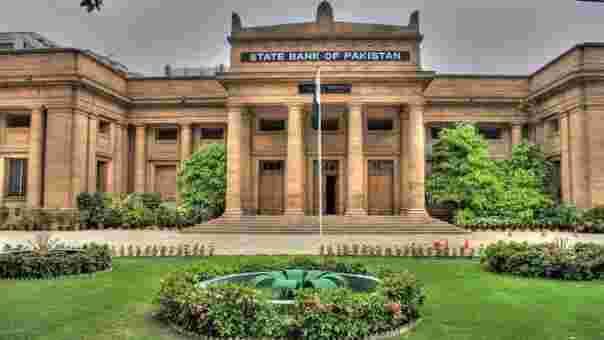Karachi, October 17, 2024 – The State Bank of Pakistan (SBP) has projected the country’s gross domestic product (GDP) growth at 3.5% for the fiscal year 2024-25, just shy of the government’s target of 3.6%.
This projection was outlined in the SBP’s Annual Report on Pakistan’s Economy for FY24, released on Thursday, which also forecast inflation at 13.5%, higher than the government’s target of 12%.
The SBP’s projection is grounded in the country’s ongoing macroeconomic stabilization, bolstered by successful engagement with the International Monetary Fund (IMF) and improved global economic conditions. Despite the slightly lower GDP estimate, the report emphasized Pakistan’s improving economic trajectory, driven by recovery in key sectors, rising remittances, and a stabilizing external account.
Key Economic Indicators
One of the report’s standout observations was the forecast of remittances inflows for FY25 at $33 billion, surpassing the government’s target of $30.5 billion. This steady increase in remittances is expected to provide critical support for Pakistan’s foreign exchange reserves, which have shown signs of improvement in recent months. As of the week ending October 4, 2024, the State Bank’s reserves had risen to $16.05 billion, up from $15.983 billion the previous week, indicating stronger foreign inflows.
On the fiscal front, the report painted a mixed picture. The fiscal deficit is expected to remain around 6.5% of GDP, exceeding the government’s target of 5.9%. Similarly, the current account deficit is forecast to hover around 1%, well within the manageable range given the narrowing trade deficits and improving remittance inflows. The SBP noted that sustained fiscal consolidation efforts would be vital to maintaining economic stability in the coming years.
Macroeconomic Improvements in FY24
The SBP’s report highlighted the notable improvement in Pakistan’s macroeconomic conditions during FY24. Stabilization policies, combined with favorable external factors, helped Pakistan navigate through a challenging year. Agricultural productivity played a significant role in the country’s economic recovery, with record wheat and rice harvests and a rebound in cotton production providing a much-needed boost.
The narrowing of the current account deficit to a 13-year low in FY24 was a significant achievement. Strong growth in remittances and exports managed to offset a slight uptick in imports. Additionally, the IMF’s Stand-By Agreement (SBA), signed earlier this year, helped catalyze further inflows from multilateral and bilateral sources, contributing to a buildup of foreign exchange reserves and easing pressure on the rupee.
A gradual appreciation of the exchange rate, combined with higher-than-anticipated fiscal consolidation, resulted in a notable decline in the public debt-to-GDP ratio in FY24. The SBP maintained its tight monetary stance, keeping the policy rate at 22% for much of FY24, a necessary move to contain inflation and stabilize financial markets.
Inflation and Policy Adjustments
Inflation in FY24 dropped from its peak of 38% in May to 12.6% by June, averaging 23.4% for the year—an improvement compared to the previous year’s 29.2%. The SBP’s tight monetary policy and administrative reforms in the foreign exchange and commodity markets helped mitigate inflationary pressures. By June 2024, the SBP cut the policy rate by 150 basis points to 20.5%, signaling a cautious return to easing policies as inflationary pressures subsided.
Looking ahead to FY25, the SBP forecast inflation at 13.5%, though it noted the potential for inflation to fall below this range if fiscal consolidation efforts continue to gain traction. A reduction in global commodity prices, coupled with a stronger rupee, is expected to contribute to a more favorable inflationary environment in the coming year.
Structural Challenges and Reform Agenda
Despite these positive developments, the SBP report underscored that structural impediments continue to constrain Pakistan’s long-term growth potential. Key challenges include falling investment, low savings, a lack of research and development, and inefficiencies in the energy sector. The report highlighted the accumulation of circular debt as a significant hurdle, noting that while the government has introduced energy price adjustments, more comprehensive reforms are needed to resolve systemic issues.
The report also delved into the inefficiencies of state-owned enterprises (SOEs), which continue to be a drain on fiscal resources. The SBP stressed the need for sectoral policy and regulatory reforms to enhance the competitiveness of SOEs, including the implementation of recently introduced corporate governance reforms.
Outlook for FY25
The SBP expressed cautious optimism for FY25, projecting GDP growth in the range of 2.5% to 3.5%. The approval of the IMF’s Extended Fund Facility (EFF) in September 2024 is expected to strengthen Pakistan’s external position, improve its credit rating, and boost investor confidence. With global inflation falling and commodity prices remaining stable, the external environment is conducive to further macroeconomic stabilization.
However, the report emphasized the importance of continued fiscal discipline, policy reforms, and effective governance to sustain these gains and steer Pakistan toward sustainable long-term growth.
